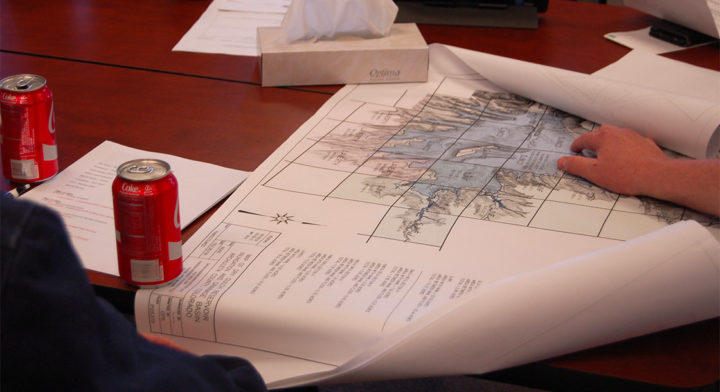We’re listening to Archuleta County Commissioner Michael Whiting, at the Tuesday, June 13 Board of County Commissioners work session:
“This is the smaller Dry Gulch — 11,000 acre-feet or thereabouts — $60 million is the current price tag. They don’t own the land necessary to build the reservoir. There’s still two private parties [who would need to sell property] and a Forest Service land exchange they have to execute, before they can do this.”
“They” is the San Juan Water Conservancy District board, a volunteer group of court-appointed citizens who approved a resolution on Monday to ask Archuleta County taxpayers for a property tax increase. The increased taxes — if approved in November — would be used to purchase or otherwise finagle enough additional property to accommodate a future reservoir in Dry Gulch.

As we noted yesterday in Part One, SJWCD does not technically own the 660 acres purchased back in 2008 from the Weber family — the property intended, back then, for a 35,000 acre-foot reservoir. SJWCD ‘owns’ only a 10 percent interest in that property, with the other 90 percent ‘owned’ by the Pagosa Area Water and Sanitation District (PAWSD).
Technically, I suppose the whole property belongs to ‘We the People.’ The taxpayers. But we don’t always get to weigh in these purchasing decisions.
The increased taxes proposed by the SJWCD board would cover a proposed Colorado Water Conservation Board loan aimed at additional land purchases, but would not come close to paying for a $60 million reservoir. Nor would it pay for the water lines necessary to deliver the water to anyone.
The SJWCD board wants to buy additional land for a reservoir, which they have no money to build. Do not be confused by this fact. The American water industry often works this way. For example, between 1968 and 2011, the U.S. Bureau of Reclamation spent over $500 million building the Animas-La Plata Water Project, which resulted in a 124,000 acre-foot reservoir near Durango called Lake Nighthorse — named in honor of former U.S. Senator Ben Nighthorse Campbell.
The lake “provides water storage for tribal and water rights claim-holders along the Animas River,” (Wikipedia). The reservoir was pronounced “full” in 2011, after 40 years of controversy and cost overruns. But the reservoir has no water lines connected to it. The only way it can deliver water to anyone is to dump its water back into the Animas River — the same river from which the water was pumped (500 feet, uphill) into the reservoir, at considerable taxpayer expense.
You can read an interesting 1998 article about the then-still-incomplete Lake Nighthorse in this Los Angeles Times article which characterized the A-LP project this way:
“The major contemporary battlefield over such issues is southern Colorado, home of the last of the great pork-barrel boondoggles, the Animas-La Plata Project…”
So, with the concept of ‘pork-barrel boondoggles’ lodged firmly in our minds, let’s return to the June 13 BOCC meeting, where Commissioner Michael Whiting is commenting on the SJWCD resolution to seek a tax increase for further Dry Gulch property purchases:
“So if they don’t succeed at the ballot — or rather, I should say, when they don’t succeed at the ballot — they will not have the capacity to build the project. In essence, what they are posing as a $2 million tax increase is really a referendum on a $60 million project.
“We had some conversations [at the SJWCD board meeting] about some of their cost fallacies, but they voted to move forward on this. And I expressed my personal disappointment…”
At this point in the conversation, County Attorney Todd Starr had opened his computer and was reading off the names of the San Juan Water Conservancy District board members.
“Rod Proffitt, Ray Finney, John Porco, Allan Pfister, Susan Nossaman, and Doug Secrist.”
If you happen to visit the Archuleta County Democratic Party website, you might notice that Rod Proffitt, Ray Finney and John Porco are all officers in the Democratic Executive Committee. It appears that Allan Pfister is also registered as a Democrat, but his name does not appear on the Central Committee roster. Doug Secrist appears to be a registered Republican, and Susan Nossaman as ‘Unaffiliated,’ according to VoterRecords.com
You can click here to download the resolution as approved by the SJWCD board on June 12.
Commissioner Steve Wadley:
“Which board member is driving this?”
Commissioner Whiting:
“Oh, it’s Rod. For sure.”
Wadley:
“And Al Pfister voted against it?”
Whiting:
“His comment, before he voted, was that they could wait — that they should wait — an election cycle, to get better ‘mindshare.’ That’s my term for it. To do a better job of getting information out to the voters. That was his opinion. That there isn’t enough time to prepare voters for this.”
Wadley:
“Well, there are things you can control, and things you can’t… and… This is not good news.”
Whiting:
“No, it’s not good news. There’s still a window of opportunity, to get them to turn this thing around, but it would be a long shot. I didn’t come right out and tell them, at the meeting, that they should definitely not do this. Wasn’t my position to say that.”
Wadley:
“Wouldn’t have mattered.”
Whiting:
“Didn’t look like it would. Looked like pretty much a foregone conclusion… They already had the resolution language written up… Rod was optimistic that they would prevail at the polls…
“So I just wanted you [fellow commissioners] to know where that’s at, so we can adjust our strategy accordingly.”
That would be, the strategy of getting the BOCC’s own multi-million-dollar tax increase approved at the ballot, to build an expensive new jail… while the existing downtown jail sits vacant… neglected… discarded…

